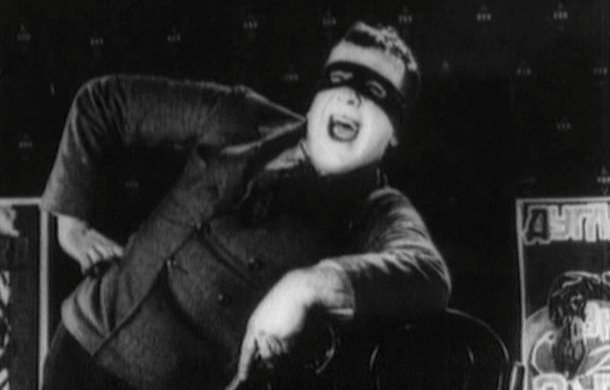In the 1920s, prominent figures of silent American cinema, such as Douglas Fairbanks Sr, Mary Pickford, and Pearl White, presented Soviet audiences with alternative ideals of femininity and masculinity.
In the early 20th century, there was a perception in Russian society of a modern set of qualities similar to those admired by French historian Alexis de Tocqueville in Americans. These qualities included efficiency, physical fitness, optimism, and a pioneering spirit akin to frontiersmen’s.
Following the 1917 revolution, these traits were celebrated as exemplary qualities for citizens of the new Soviet state to embody. In the 1920s Soviet press, the term “Russian Americans” was commonly used to describe citizens who exemplified these traits, often referring to efficient and technologically skilled workers akin to the “extraordinary men and women” of the Stalinist era in the 1930s.
During the 1910s and 1920s, the Russian populace was exposed to a favorable depiction of American qualities through the influx of American films. Between 1922 and 1928, American imports constituted 43.7% of all films screened in the Soviet Union.
Pearl White, Douglas Fairbanks Sr., Mary Pickford, Charles Chaplin, William S. Hart, and various other American stars became beloved figures among Russian audiences. These stars portrayed vibrant and hopeful characters and frequently achieved success in the rags-to-riches storylines of popular films.
Douglas Fairbanks Sr. emerged as one of early Soviet Russia’s most beloved foreign film stars. While several of Fairbanks’ early features were screened in Moscow before 1925, it was his four successful imports since 1925 – The Thief of Bagdad [USA 1924], The Mark of Zorro [USA 1920], Robin Hood [USA 1922], and Don Q, Son of Zorro [USA 1925] – that truly captivated Russian audiences.
Also Read: 7 Questions For Ibraaz’s Anthony Downey
By 1928, when questioned by journalists about their preferences in foreign films, Soviet children frequently cited Douglas Fairbanks, whose bravery they aspired to emulate. A 1929 survey among children revealed that Fairbanks’ movies The Thief of Bagdad and The Mark of Zorro topped their favorites list, with the Soviet adventure film Little Red Devils [Krasnye diavoliata, 1923] following closely behind.
The footage of Fairbanks and Pickford’s arrival in Moscow in 1926 was utilized by Lev Kuleshov’s student, Sergei Komarov, in the popular comedy The Kiss of Mary Pickford [Potselui Meri Pickford, 1927].
The storyline centers around a Chaplinesque movie theatre usher named Goga Palkin (played by Igor Ilyinsky), whose sweetheart Dusya (portrayed by Anel Sudakevich) is an ardent fan of Fairbanks. After watching The Mark of Zorro, Dusya rejects Goga.
Throughout the film, Goga undergoes numerous identity transformations, attempting to mimic Fairbanks by practicing his smile and acrobatic leaps and subjecting himself to various peculiar trials to become a renowned “stuntman.”
At the film’s conclusion, after receiving a kiss from Mary Pickford, Goga transforms into a local sensation and ultimately wins Dusya’s affection. Goga’s readiness to transform identity, aiming to mirror Fairbanks’ appearance and celebrity status, satirizes and validates comparable inclinations among male viewers in 1920s Soviet Russia. Fairbanks’ star persona emerged as a symbol of physical allure and admirable conduct.
An exemplary trait of Fairbanks was his remarkable physical fitness, evident in his personal execution of numerous stunts and athletic feats in all his films screened in Russia. In “The Thief of Bagdad,” Fairbanks’ character Ahmed scales tall walls, pilfers food from a balcony two floors above, and effortlessly vaults over the heads of multiple men in prayer. Fairbanks portrayed an ideal of male physicality, showcasing robust muscles as a prominent visual feature.
Even before Fairbanks’ films reached Russia, Soviet film journals lauded American cinema for portraying “sportsmen” heroes and their narratives emphasizing courage, agility, and resourcefulness. An article in a 1923 issue of Kino magazine contrasted the “sportsman” of American cinema with the “typical European actor-intellectual with weak muscles.”
The author, Veronin, advocated for Soviet cinema to draw inspiration from American cinema by featuring new actors embodying similar traits. With Fairbanks’ fit and muscular presence on Soviet screens, it was natural for his star image to influence the depiction of new Soviet film heroes, especially since critics were calling for characters with comparable qualities.
In 1925, Soviet critic Ter-Oganesov hailed Fairbanks as a paradigm of the new “sportsman” hero, a daring figure who “accomplishes everything expected of his type of hero and does so remarkably.” Similarly, critic Abramov lauded Fairbanks as the quintessential hero of American cinema, highlighting the absence of such a figure in Soviet cinema thus far.
In addition to physical fitness, characters like Fairbanks Ahmed, Zorro, and Robin Hood embody optimism, joyfulness, and a good sense of humor. Soviet descriptions of Fairbanks from that time highlight his talent for eliciting laughter from viewers.
Ter-Oganesov, writing in Kino-zhurnal ARK, notes, “Humor is a constant element in his films. Healthy and genuine laughter runs through all his movies like a central theme.”
In the 1930s, optimism, and joyfulness became officially promoted character traits in portrayals of the New Soviet Person, particularly in comedy genres.
Boris Shumyatsky, head of Soiuzkino, favored comedy as part of the new Soviet “cinema for the millions.” This era saw the emergence of new film heroes characterized by athleticism, optimism, and efficiency, influenced by previous films and stars that had made a lasting impact.
 Marina L. Levitina teaches Russian cinema at Trinity College Dublin. She is the author of the new book ‘Russian Americans in Soviet Film: Cinematic Dialogues between the US and the USSR, out at the end of March.
Marina L. Levitina teaches Russian cinema at Trinity College Dublin. She is the author of the new book ‘Russian Americans in Soviet Film: Cinematic Dialogues between the US and the USSR, out at the end of March.
Image: Igor Ilyinsky in The Kiss of Mary Pickford, 1927
You Might Wanna Know About Wim Wenders on Claire Denis


